The People’s Reserve’s Intention is to provide a trusted Digital Currency…
FOR THE PEOPLE!
A naturally expanding Economy – an Economy that allows us all to
enjoy significantly more Freedoms.
Through the power of Compounding Rewards in the TPR Wallet – we have the opportunity for generosity to thrive and for Humanity to Rise.
IMPORTANT NOTICE
It is important that you read this document carefully and in its entirety prior to participating in The People’s Reserve ecosystem (TPR Ecosystem). You should seek personal advice from your accountant and legal representative prior to acting on the information contained in this Whitepaper.
a. Issuer of Whitepaper
The issuer of this Whitepaper is TPR LLC (TPR).
b. Not Securities
The product described is not an offer of securities. This material is provided by TPR LLC for informational purposes only and is not an offer or a solicitation to buy or sell securities or engage in financial services.
c. No Investment Advice
The product offered is not offered for investment purposes. The information contained in this Whitepaper should not be taken as financial product advice and has been prepared as general information only. To the extent permitted by the applicable International Laws, regulations, and rules and those of the participants’ country of residence, TPR shall not be liable for any losses that are indirect or otherwise, that may be in connection to the reliance of this Whitepaper. Please consult your legal, financial, or business professional for advice prior to participating in the TPR Ecosystem. Prior to the participation in the TPR Ecosystem you should carefully address the general risks involved with blockchain technology.
d. Future and Past Performance
Neither a representative of a company nor any persons associated with the company may warrant the future performance of the TPR Ecosystem or TPR coins. Past performance of TPR should not be relied upon as indicative of future performance.
e. Representation and Warranties
By accessing this document or any part thereof, you acknowledge, understand, and agree that:
i. TPR does not afford the participant any rights or obligations in the TPR Ecosystem;
ii. This document does not constitute a guarantee or a promise of; future prospects, features of the ecosystem and/or any form of legally binding agreement between TPR and the reader of this document;
iii. You are permitted to access this document pursuant to the laws of your country of residence;
iv. The redistribution or dissemination of this document, or any part or section thereof, is prohibited without the permission of TPR;
v. TPR and/or its affiliates are not liable for any losses of any kind arising from the reliance of this document; and
vi. Information in this document does not constitute legal, financial, business or tax advice.
f. Jurisdiction
The Whitepaper has been prepared to comply with international law. The TPR Ecosystem will be regulated under international law and any other applicable law. Participants of the TPR Ecosystem will be regulated by International laws, laws of their country of residence, and any other applicable law. This Whitepaper does not constitute an invitation in any place in which, or to any person whom, it would not be lawful to make such an invitation. The distribution of this Whitepaper (whether electronically or otherwise) in certain jurisdictions may be restricted by law. Persons who come into possession of this Whitepaper should seek their own advice and observe any such restrictions.
Any failure to comply with such restrictions may constitute a violation of applicable laws. Unless otherwise agreed by TPR, any person participating in the TPR Ecosystem shall be by virtue, deemed to represent that they are in a jurisdiction that permits the participation detailed in this Whitepaper, and is not acting for the account or benefit of a person within such jurisdiction that does not permit participation detailed in this Whitepaper.
g. Guarantee
This document does not afford any guarantees or promises. All features referenced to in this document or related documents are not guaranteed. This document does not guarantee that the services mentioned will be released. If a product is released there is no guarantee that the product will resemble or abide by the features listed in this document. This document should not be relied upon as a promise or representation of the future projections of TPR.
h. Backing
The People’s Reserve does not hold out that the TPR Coin is backed by physical gold or any other tangible asset.
i. Distribution of Document
The distribution or dissemination of this document or any part or section thereof, is prohibited without the consent of TPR. This Whitepaper may not be distributed to or relied upon by any person in China or the United States.
j. Privacy
By participating in TPR Ecosystem, you are required to provide personal information to TPR. A full list of personal information used will be listed on TPR’s privacy policy. Participants domiciled or a national of a European country may make request for personal information to be deleted at any time as per the GDPR. However, users who request the deletion of their personal information will be forced to cease use of our services.
k. Blockchain General Risks
Blockchain technology presents many inherent risks. Please ensure you are either well informed in relation to blockchain technology or have consulted a blockchain advisor prior to participating in the TPR Ecosystem.
l. Anchored Token
The TPR coin is an anchored token, which is a type of token that does not exceed the value of anchor point but may fluctuate below it. TPR coin is anchored to the highest price of gold and thus the value of the token cannot exceed the highest price of its anchor point.
The value of TPR coin is not guaranteed. Due to the nature of blockchain technology, TPR does not have control of the economy or ecosystem. However, TPR implements non-collateralised algorithmic mechanism that attempts to influence the supply and demand of the TPR coin as a counterweight.
m. Updated Information
Information relating to the offer may need to be updated from time to time. Any updated Information about the offer not materially adverse to the product offering will be made available at TPR. TPR may issue a supplementary Whitepaper to supplement any information not disclosed in this Whitepaper.
n. Rewards
Rewards in relation to the participation of TPR Ecosystem may vary from time to time. The rewards displayed on this Whitepaper and on the TPR website reflect the rewards as of the date of this Whitepaper and may be amended, changed, or varied at any time without notice.
o. Currency
Unless expressly stated, monetary amounts are expressed in AUD dollars.
p. Photographs and Diagrams
Diagrams and maps used in this Whitepaper are for illustrative purposes only. All information represented in the charts, graphs and tables are based on information available as of the listed date.
INTRODUCTION
2.1. Blockchain Technology
Cryptocurrency is built on blockchain, an emerging technology. The emergence of blockchain technology has allowed individuals to take control of their own funds, it has allowed users to store funds in their personal wallets which cannot be accessed by any third-party institution and it has allowed for trusted value transfer without the requirement of a third party. Cryptocurrency can be transferred almost instantly to receiving wallets without the tedious settlement requirements.
Blockchain technology relies on the laws the code has created and not on the whimsical and fleeting opinions and interpretations of humans.
At present the cryptocurrency markets are generally subject to extreme volatility, often exposed to large value swings both up and down. The volatility of the market dissuades individuals from using their cryptocurrency as a mechanism for payment as individuals generally view cryptocurrencies as an investment vehicle as opposed to a currency to spend.
As such, TPR wishes to close the gap in this market by applying the benefits of crypto currency’s independence from third party institutions and creating a coin with reduced volatility via mechanisms in place as compared to cryptocurrencies such as Bitcoin and Ethereum. TPR’s vision is to build a revolutionary monetary economic ecosystem independent of third-party entities.
2.2. What is a Native Token?
A native coin is a coin that has originated and been developed on a particular and specific blockchain protocol. When reference is made to a native coin it means a coin has been created and used on a very specific Blockchain Protocol.
______________________________________________________________________________________
A non-native token is a token that has been developed on another protocol, such as Ethereum or Bitcoin and may have been transferred too or synthetically created on a different Blockchain.This is a more common practice than the more complex endeavour of developing a unique, native, and very specific Blockchain Protocol as TPR has been.
______________________________________________________________________________________
This is a more common practice than the more complex endeavour of developing a unique, native, and very specific Blockchain Protocol as TPR has been.
______________________________________________________________________________________
A non-native token could come with many limitations, whereas TPR is an innovative coin free of limitation and restriction, enabling it to execute many unique, high-performance smart contracts.
______________________________________________________________________________________

2.3. What is a Node?
A node is a device that stores the history of a blockchain on it. A Blockchain generally requires multiple nodes to operate so data is secured and not lost. A witness node stores the complete data of a blockchain.
2.4. Proof of Stake?
Proof of stake is where the blockchain data is validated/confirmed by current coin holders rather than third party miners. Staking or mining on the TPR platform is the act of participating in proof of stake. Participation is internal to the coin’s algorithm. Holders of TPR are participants in the network. A user’s wallet may be selected randomly to participate as a node. This is how participation can be defined. The willingness to be selected as a node by random selection. As a result of this participation, users are rewarded with compounding.
2.5. What is Consensus?
From the perspective of blockchain technology, consensus is an algorithm that allows data to be distributed in a network which can be shared and validated by multiple anonymous people to confirm that the data is correct. From the perspective of currency, consensus simply means agreement of currency value.
2.6. What is Fiat Currency?
Fiat currency is a currency that has been issued by a government body such as US dollars or Japanese Yen.
2.7. What are Holds?
Users may “hold” their coins in the TPR wallet to receive compounding per annum. The People’s Reserve coins can be put on hold to receive increased compounding. Holds are virtual assets that can be purchased in the TPR wallet. 1 hold is equal to 0.1 TPR. Purchased holds cannot be transferred or sold until they expire. Upon expiration, the hold amount as well as the compounding are paid out by the smart contract and made available for the coin holder in the TPR wallet.
2.8. What are Smart Contracts?
A smart contract is an automation tool. It is a set of rules that is created on a blockchain that must be followed. The People’s Reserve network supports creation of smart contracts. These contracts are self-executing and self-enforcing.
They are governed by the explicit terms and conditions laid out within them. Smart contracts are a transparent and efficient way to automate network operations. Since the system’s core components are written as smart contracts, users can have full trust in the network. The People’s Reserve coin utilises a complex and modern collection of smart contracts in order to execute all of its rewards, benefits and processes.
THE TPR ECOSYSTEM
The TPR Protocol consists of multiple features that connect with each other to create an ideal system for the transfer of value.
Key component
Description
Blockchain Network
TPR utilises its own Blockchain network called the TPR blockchain. The TPR Blockchain consensus algorithm utilises Permission Proof of Stake. Proof of stake is where the blockchain data is internally validated by randomly selected user’s wallets. As a result of being selected the user’s wallet acts as a node. All functions are performed by the algorithm so the user has no personal involvement – just their wallet serving as the node.
Anchor Point
The TPR coin utilises Gold Price Oracle to retrieve the current and past gold prices and prescribe a gold price being the highest value of gold (as of the last 24-hourly update) as an anchor point to be reflected in the TPR coin when stored in a TPR wallet. An anchor point means the value of the TPR coin will not exceed the highest price of gold, but it may fluctuate below the prescribed gold price. It does not indicate that the TPR coin is pegged to the gold.
Non-Collateralised Algorithmic Mechanism (NCAM)
The NCAM is a form of validation for the anchored TPR coin that takes place in the TPR Exchange, which is another facet of the anchor that determines the value of the TPR Coin. The NCAM will attempt to influence the supply and demand of the TPR coin as a counterweight.
Exchange
Once construction of the People’s Reserve Exchange is complete and the Exchange is fully operational, we intend for it to provide two critical functionalities:
- Allowing users to exchange TPR coins for fiat and other digital currencies; and
- Assisting to validate the value of the TPR coins
Wallet
The People’s Reserve wallet allows users to send and receive coins as well as receive mining rewards (staking) and compounding.
Coin
The People’s Reserve coin is a digital currency created by TPR that is intended to be used as a medium of exchange in the TPR Ecosystem. The TPR coin utilises the 24hr-highest gold price (updated every 24 hours) as an anchor point, however, the value of the coin is based solely on supply and demand of the coin and is not pegged to the value of gold.
Properties
(a) Coin name: The People’s Reserve (TPR)
(b) Decimals: 6
(c) Supply: 500 100 000 TPR
(d) Consensus: Permissioned Proof of Stake with
7 Consensus Master Nodes
(e) Settlement time: 3-9 seconds
(f) Transactions per second: 2000
The People’s Reserve - AN ANCHORED COIN
The TPR coin is a coin native to the TPR Blockchain. The TPR coin is an anchored coin intended to be a cryptocurrency with more reduced volatility than other currencies such as Bitcoin and Ethereum, by using the price of a stable underlying physical commodity, gold as an anchor point. The TPR coin price is dictated by supply and demand, and uses a multi-faceted mechanism to anchor its value. The first facet is the 24-hourly highest value of a Troy Ounce of gold as reflected in the TPR wallet. The second facet relies on the TPR exchange to validate its value. The Third facet relies on merchant acceptance of the coin, at the proposed value, to be exchanged for goods or services.
4.1.
The TPR Coin is not backed or pegged too or supported by physical gold. Rather, TPR utilises a modern non-collateralised approach. A physical gold collateralisation arrangement would create constrictions including slowing the growth of a naturally expanding economy. Thus, the TPR is anchored to the prescribed gold value and thus the coin cannot exceed that prescribed gold value and if TPR coin price fluctuates below the prescribed gold value, TPR will utilise its Non-Collateralised Algorithmic Mechanism (NCAM) to attempt to influence the supply and demand of the TPR coin as a counterweight.
The TPR Coin’s value is reflected in the TPR wallet. The NCAM is a facet that contributes to the validation of the TPR coin value as it has the ability to buy or sell TPR coins, or offer increased TPR rewards, as required, to attempt to reduce volatility in the value of the TPR coins.
Businesses that accept TPR coins at the prescribed gold value are another facet of the anchored coin value. Businesses that accept TPR for their goods or services validate that TPR coins may be spent with them, at the prescribed gold price. This may incentivise individuals to purchase services from merchants rather than attempting to sell their coins at a lower price than the prescribed price at any given time.
Cryptographic coins that have presented reasonable stability in the market have been more openly adopted than their more volatile counterparts as a form of payment for goods and services rather than a mechanism for investment.
4.2. TPR Rewards – Mining (staking) & Compounding
*Staking is the more technical term.
All Mining & Compounding Rewards happen automatically, without any human involvement. TPR holders may generate mining and compounding rewards as follows:
– 12%, or greater, mining of new coins per year- Calculated daily so these rewards are compounding for all coin holders.
– Above 12% mining and compounding can be accessed as a result of staggered coin release, choosing to put coins in hold or could be offered as a volatility reduction feature. (up to 35%)
– Mining and compounding rewards are delivered automatically via Smart Contract.

Compounding Types – With Different Rates:
#1: Mining of coins. Users may mine TPR so long as they have TPR in their wallet and they opt to mine. When mining TPR, TPR in the wallet may be moved or transferred at any time. Mining rewards are relative to the number of TPR an individual has in their wallet.
#2: Generating Rewards. Users may opt to hold their TPR coins, for a fixed period, which will generate additional coins and compounding in return. Reward rates are variable and will be displayed within the wallet prior to holding TPR.
#3: Coins will be released in stages: The 1st Release (after early release of 100,000 coins) is for 100M coins at 16% mining and 20% if entering into a 6-month hold. The 2nd Release is for 200M coins at 14% mining and at 18% if entering into a 6-month hold. 3rd Release is for another 200M coins at 12% mining and 16% if entering into a 6-month hold. Once all coins are issued from the first release, the 2nd release begins, and all holders from the first release are automatically transferred into release number two and as such start compounding at the new rate of 14% and 18%. Similarly, once all the coins from the 2nd release are issued, all holders from the 1st and 2nd releases enter in to the 3rd release, mining at 12% and 16%.
#4: Should there be a price instability which reaches a certain threshold, the non-collateralised algorithm may select to offer up to 35% compounding reward, as a volatility reduction feature.
4.3. Addressing Volatility:
Should there be higher levels of volatility, a larger amount of coins are offered at a higher rate of compounding. (up to 35% – for hold periods up to two years) At varying levels of instability various levels of compounding and hold periods would be offered to users. At extreme levels of volatility, the buying and selling of coins is frozen as a final stabilisation mechanism.
Further to this, The People’s Reserve implements a self-funded, fiat-backed reserve pool. The Peoples Reserve LLC will have a seller position in the que on the exchange and a full 50% of the monies received from that TPR LLC seller position are deposited into a fiat-backed reserve pool.
The goal of TPR is to create a New Economy built for the people. As such, the coin attempts to offer as many validation facets as possible to adhere to the anchored coin concept and accelerate the adoption of the coin. By combining an anchored value with the NCAM complimented by consensus and a fiat-backed reserve pool, TPR has a multi-faceted volatility reduction approach.
To move TPR Coins between wallets, a transaction fee must be paid, which will be further discussed in the corresponding section of this Whitepaper.
4.4. The Coin’s Purpose:
The TPR Coin’s purpose is to be used as a store of value and to allow for payment of goods and services.
The properties of the coin include the following:
(a) Coin name: The People’s Reserve (TPR)
(b) Decimals: 6
(c) Supply: (500,100,000)
(d) Consensus: Permissioned Proof of Stake with 7 Consensus Master Nodes
(e) Settlement time: 3-9 seconds
(f) Transactions per second: 2000
TPR Wallet
The TPR Wallet is a sufficiently audited IOS and Android wallet specifically built for the decentralised storage of TPR coins.
As part of the pre-release audit process, the code of the application is reviewed by a qualified blockchain expert and determined to be secure with every facet of operation – that is, the code is determined to be working seamlessly.
At present the cryptocurrency markets are generally subject to extreme volatility, often exposed to large value swings both up and down. The volatility of the market dissuades individuals from using their cryptocurrency as a mechanism for payment as individuals generally view cryptocurrencies as an investment vehicle as opposed to a currency to spend.
5.1. Adding a New Contacts:
The TPR wallet allows individuals to add and save contacts to send TPR coins to.

When processing a transaction, a user will be required to add a new contact. A wallet address as well as a corresponding name must be added when creating a new contact. The wallet has the option to scan a QR code describing the wallet address.

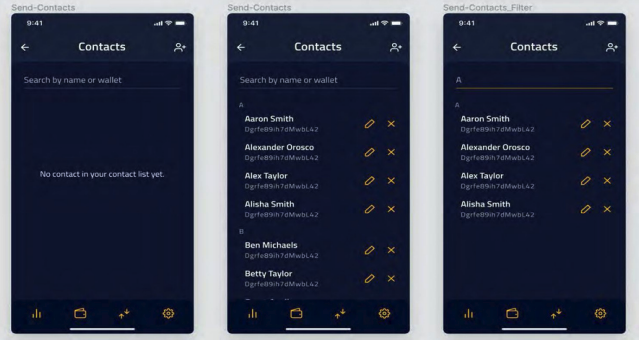
Users may edit the contact name and wallet address as well as delete the contact after the transaction has been completed.
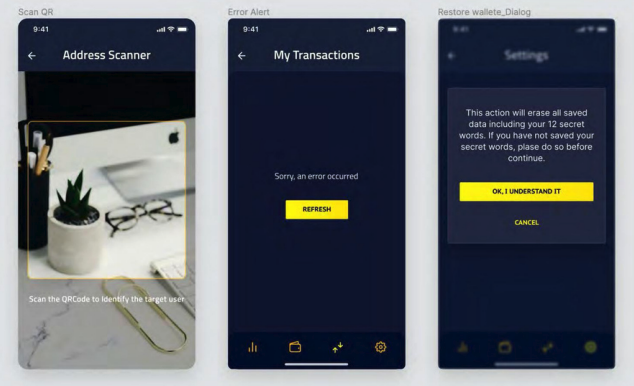
When processing a transaction, a user will be required to add a new contact. A wallet address as well as a corresponding name must be added when creating a new contact. The wallet has the option to scan a QR code describing the wallet address.
5.2. Holding Coins
Users may “hold” their coins in the TPR wallet to receive compounding per annum. Holds are virtual assets that can be purchased in the TPR wallet. 1 hold is equal to 0.1 TPR. Purchased holds cannot be transferred or sold until the hold period expires.
Upon expiration, the hold amount as well as the COMPOUNDING are paid out by the smart contract. There is nothing for the coin holder to do – the Smart Contract fully executes the transaction.
Holding TPR coins locks the TPR coins in the user’s relevant TPR wallet where the held TPR coins will be used to help validate transactions on the network.
Again, there is nothing for the coin holder to do— the Smart Contract completes this task automatically. Holding coins should be distinguished from storing coins. The Coin Storing mechanism refers to the functionality for depositing TPR coins in the TPR wallet with ease and without encumbrance.
Users holding coins reduces the number of coins that can be sold off which in turn. supports a reduced volatility, healthy and expanding economy.

*Please not the Compounding Rate displayed is for informational purposes only. The rate may vary from time to time.
When holding coins in the TPR wallet, there is a requirement for those coins to be locked for a minimum period of 6 months.
5.3. Currency Settings
The TPR wallet allows users to choose the currency that they feel most comfortable with to display the value of the TPR coins held in their wallet.

The TPR wallet has an inbuilt feature connected to market API’s that will provide a representation of the value of your TPR.

5.4. Wallet Overview
The TPR wallet has a simple wallet overview page when logged in. It simply displays the amount of TPR held in your wallet, the value of TPR in accordance with the People’s Reserve Exchange in your chosen currency and your wallet address as well as the ability to send, hold and receive coins
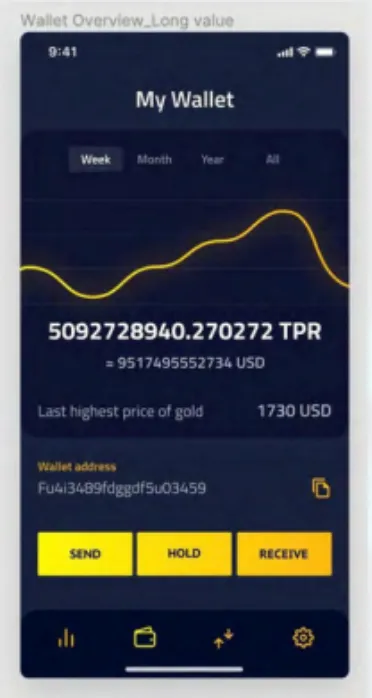
5.5. Transactions
The TPR wallet displays transaction in a clear and precise manner. The transaction screen displays incoming and outgoing transactions including the date, time TPR amount block number, what wallet address received the transaction and what wallet address sent the transaction.
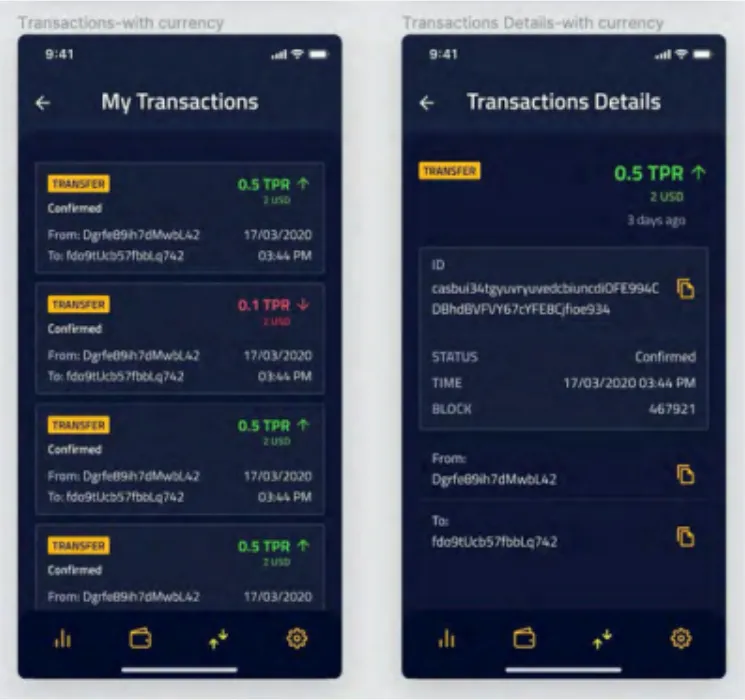

5.6. Security
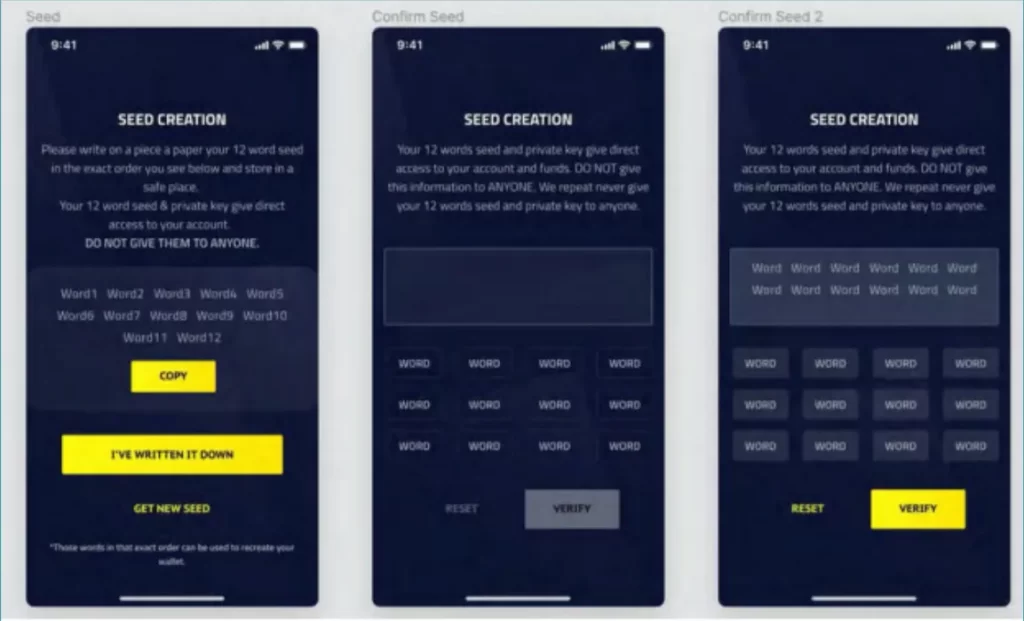
When a user creates an account with the TPR wallet they are presented with a seed phrase. This seed phrase will enable you to recover your wallet and its contents if you happen to lose your phone. Once you receive and have written down your seed phrase, you will be prompted to input it into the TPR wallet to ensure you wrote it down correctly. Please note, the seed phrase is sensitive to the order of wording.
The seed phrase must not be shared with any individual. We recommend writing the seed phrase on a piece of paper and store it securely. Users should not store their seed phrase anywhere digitally.
If your seed phrase is stolen, malicious individuals may try to access your wallet and seize the contents. If you lose possession of your phone and do not have access to your seed phrase there is no way of recovering the TPR Coins within your TPR wallet.
Due to the nature of blockchain technology, TPR does not have access to your wallet and has no way of recovering contents of your wallet.
Keeping your seed phrase offline ensures that people are unable to retrieve the seed phrase remotely. Thus, the only way to retrieve someone’s seed phrase if written down on a piece of paper is to retrieve that paper in person.
Therefore, security of your wallet is significantly increased in comparison to a password in which people can obtain from a remote location in the event your device is compromised with malicious software.
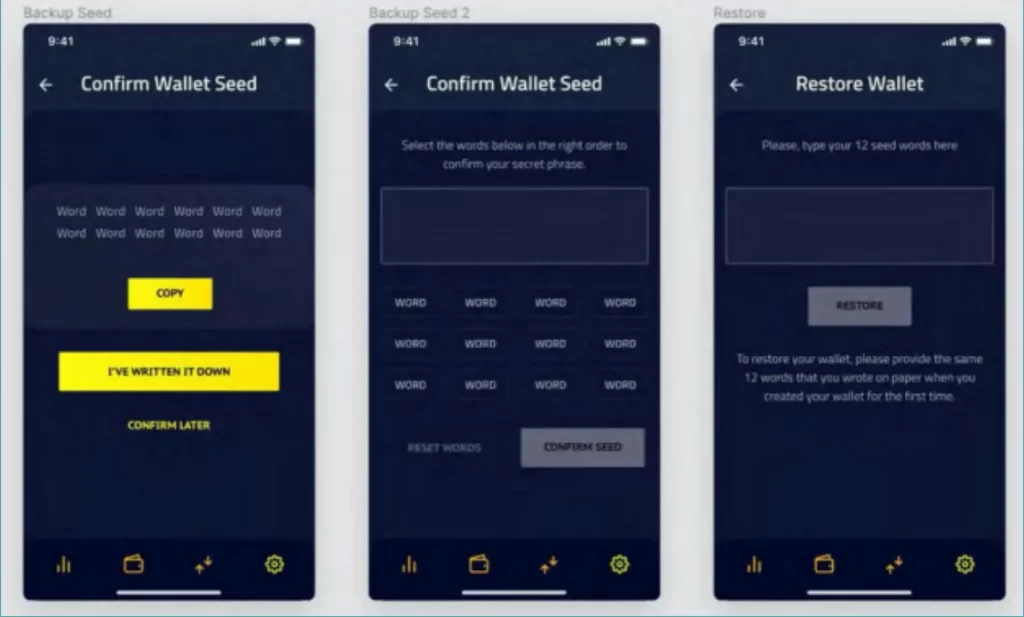
An option contained in the TPR wallet is to restore a wallet using a seed phrase. User’s may restore any wallet onto any phone compatible with the TPR wallet so long as they correctly input the seed phrase.
TPR Wallet
6.1. The TPR Blockchain
The consensus algorithm used by the TPR Blockchain is Permissioned Proof of Stake.
It is Proof of Stake protocol that grants permission with a manually selected list of consensus nodes. The TPR network is decentralised across multiple nodes that internally perform full consensus checks. No user involvement is required.
A Permissioned Proof of stake protocol, allows the data of the blockchain to be internally validated. User wallets are randomly selected by the internal algorithm and then likewise the transactions are checked and internally validated – by utilising the randomly selected users’ wallets.
This happens automatically and in less than a second as a result of the Permissioned Proof of Stake algorithm.
Compounding Rewards Are Given To Users…
If and when required, users are agreeing to have their wallet used as a node and for this permission users receive compounding rewards.
To store blockchain data, the TPR Blockchain utilises Level DB, which has been developed by Google and successfully proven as a viable key-disk value-store. It has high performance and supports arbitrary byte arrays, both keys and values, singular get, put and delete, batched put and delete, bi-directional iterators, and simple compression using Google’s Snappy protocol.
Consensus algrithm
Resource consumption
Networks
Application scenario
Transactions per second
Consensus confirmation time
Number of concensus nodes
Tolerated malicius nodes
Resource consumption
Proof of work (POW)
Bitcoin
Public chain
<20tps
1 – 60 minutes
Unspecified
50%
High
Delegated proof of stake (DPOS)
EOS, Lisk, Bitshares
Public chain
>500tps
10 seconds
Less than 30
Unspecified
Low
Practical byzantine fault tolerance (PBFT)
Hyperledger fabric
Alliance chain/ private chain
>1000tps
1 seconds
Less than 30
No more than 0.5 of consensus nodes
Low
Basic Proof of stake (POS)
NEO, Qtum
Public chain
>20tps
15 seconds
Unspecified
50%
Medium
Permissioned Proof of Stake
The People’s Reserve
Public chain
2000tps
3 – 9 seconds
Unspecified
Configurable, no more than 0.5 of consensus nodes
Low

6.2. Free Structure
The TPR Blockchain uses a dual fee system.
Bandwidth Points
Bandwidth points are required for TPR coin transactions and generating and using smart contracts on the Blockchain.
The transaction fee on the TPR blockchain is calculated in Bandwidth points. The transaction cost is based on size of the transaction in terms of data. 1 byte of data will equal 1 bandwidth point. A typical transaction will be the approximate size of 200 bytes equating to 200 bandwidth points. Every wallet will receive 5000 Bandwidth points every 24 hours. In the event the user no longer has bandwidth points their TPR Coin will be used to pay the transaction fee. 1 Byte will equate to 0.000010 TPR.
Thus, a normal user will be able to make approximately 25 transactions per day without incurring a cost due to the 5000 free bandwidth points received per day.
Energy Points
Energy is required to create and execute smart contracts. In the context of the TPR Blockchain energy is a synonym for the output or cost required by the TPR blockchain to create smart contracts.
The energy required to execute a smart contract is variable depending on its complexity and size. TPR will be converted into energy when required at the rate of 0.000001 to 100 energy points.
Putting coins in hold, for instance, requires more energy than executing a compounding transaction and thus requires a bit more energy so a higher cost in bandwidth points.
6.3. Smart Contracts
a) TPR Reserve Pool Smart Contract
The TPR Reserve Pool has the ability to provide wallet holders with Mining (staking) or Compounding depending on the feature of the contract that is utilised by the individual.
Via the TPR wallet, each user accesses the “TPR Reserve Pool” via smart contract via their TPR wallet in order to access these features.
The TPR Reserve Pool is operated in a decentralised manner, meaning that the terms of the contract cannot be changed by any one individual.
The TPR Reserve Pool holds all the non-circulating coins that are available on the TPR network.
b) Gold Price Smart Contract
Gold prices are set by the oracle every 24 hours.
6.4. Non-Collateralised Algorithmic Mechanism (NCAM)
The NCAM is inbuilt into the TPR coin’s code which is reflected on The People’s Reserve Exchange.
It is a non-collateralised algorithm based on the quantity theory of money. The quantity theory of money is a
formula used by Economists to determine the features required to stabilise an unstable currency. The quantity theory of money states: “If the amount of money in an economy doubles, price levels will also double. This means that the consumer will pay twice for the same amount of goods and services. This increase in price levels will eventually result in a rising inflation level; inflation is a measure of the rate of rising prices for goods and services in an economy.”
In order to avoid this, we want to implement a mechanism that attempts to reduce volatility in the following 2 potential scenarios:
(a) The price rises relative to the gold price, with gold acting as a reference asset for the token. In this scenario, the non-collateralised algorithm would attempt to influence the supply and demand of the TPR coins by selling TPR coins, from the internal TPR Reserve pool. Internal meaning, within the algorithm itself so it is self- facilitating.
(b) The price falls relative to the gold price. In this second scenario the non-collateralised algorithm could choose to offer up to 35% mining and compounding for a 2 year hold in order to reach the consensus value. The algorithm is further supported by anchoring the value, by creating consensus and a fiat-backed reserve pool.
Blockchain technology offers us a new era of possibilities. We no longer need a third party to confirm transactions.
We can code rules and parameters as Bitcoin has by halving its supply every four years. We can’t do that with Gold, or oil or wheat but with Blockchain we can.
Conventional stable assets require collateral. It is a backing pool that provides the stability of the asset. This pool can be in the form of fiat currency, gold or other precious metals, shares, etc. However, this form of collateral tethers the asset and makes it less flexible, losing some of the conveniences of cryptocurrency.
We believe removing the collateral solves these problems. In particular, it allows the coin to facilitate an expanding economy without the constrictions of a physical asset.
In order to achieve that, an anchored coin mechanism is used by The People’s Reserve.
6.5 Fiat-Backed Reserve Pool
To further support the coin anchoring, The People’s Reserve deposits 50% of all coin sales, done through the TPR LLC seller position on the TPR exchange, into a fiat reserve pool.
We have anchored value, non-collateralised algorithm, a self-funded fiat-backed reserve pool and consensus all aiding in The People’s Reserve Ecosystem.
6.6. Lesser Volatility and More Security
As previously mentioned, as an anchored coin, the value of the TPR coin is determined by way of an anchoring method which provides a coin of potentially lesser volatility than those simply subject to market supply and demand such as Bitcoin and Ethereum.
It is standard practice for cryptocurrencies to be traded on an open market; their value is derived from price discovery mechanisms such as crypto exchanges, and as a result are highly volatile.
The high volatility causes uncertainty and dissuades both vendors and buyers from using them as a currency.
Imagine, buying $100 worth of coins, only to find that the next day they are worth $50.
6.7. Transaction speed
Thanks to efficient Permissioned Proof of Stake consensus, The People’s Reserve can achieve very high transaction throughput.
Stress testing has shown capacity up to 2000 transactions per second with only 3-9 second settlement times under the current conditions.
6.8 Limitless potential use cases
The People’s Reserve network combined with NCAM influencing the TPR coin becomes even more powerful.
The TPR coin allows companies, merchants and individuals to settle their financial operations directly on the platform, (no third party required IE: Banks etc.) using all of its advantages.
This makes The People’s Reserve an ideal platform for decentralised applications.
6.9. Rewards and holds
The People’s Reserve provides compounding rewards at 12% and various other options at 16% – 35% per annum.
As long as coins are held in a user’s wallet, any coins receive a minimum of 12% Compounding rewards per annum payable each day. These coins can be transferred or exchanged at any time and the remainder will keep receiving the rewards.
Additionally, users may be offered the opportunity to hold their coins for up to 2 years in order to receive an increased compounding yield. (compounding as high as 35%) Held coins cannot be withdrawn, but receive increased compounding as part of the NCAM.
The reward component ensures that the correct amount of rewards are paid out to each user under the TPR Reserve Pool.
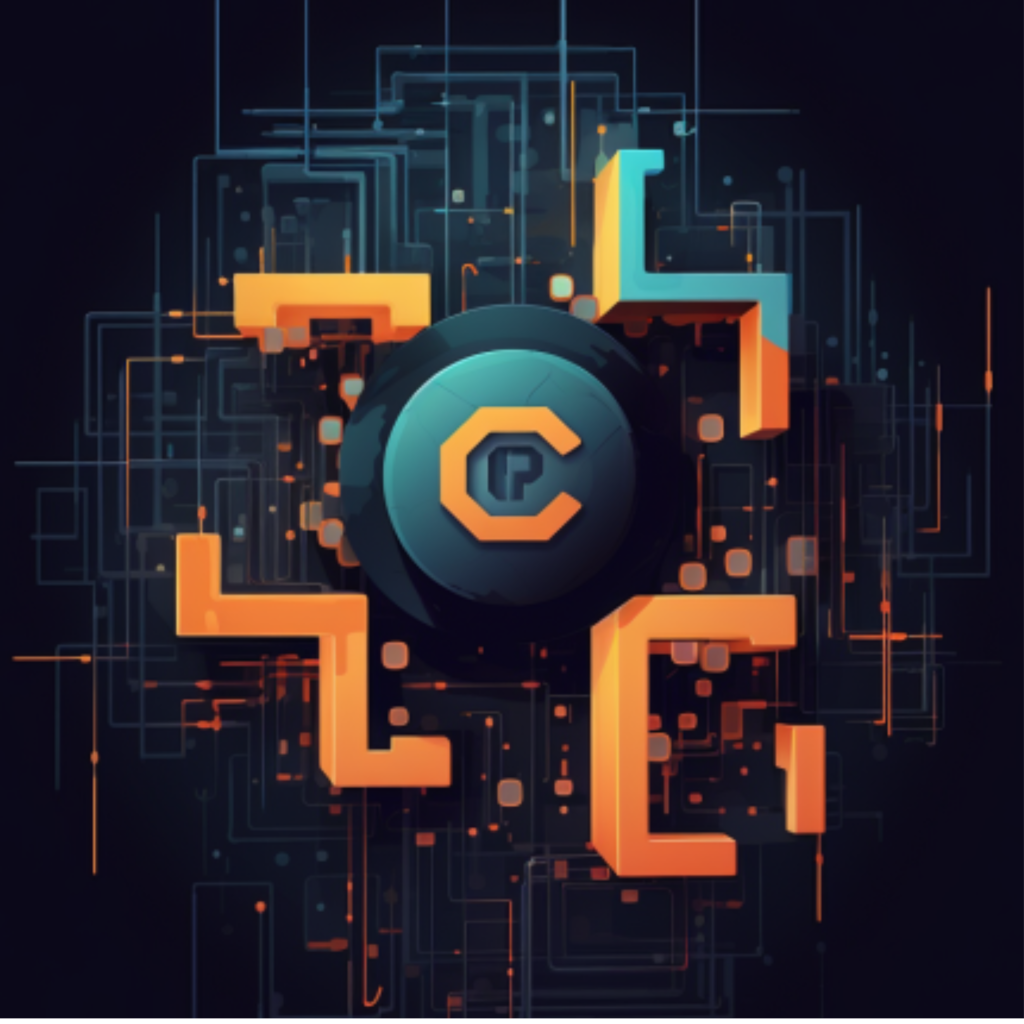
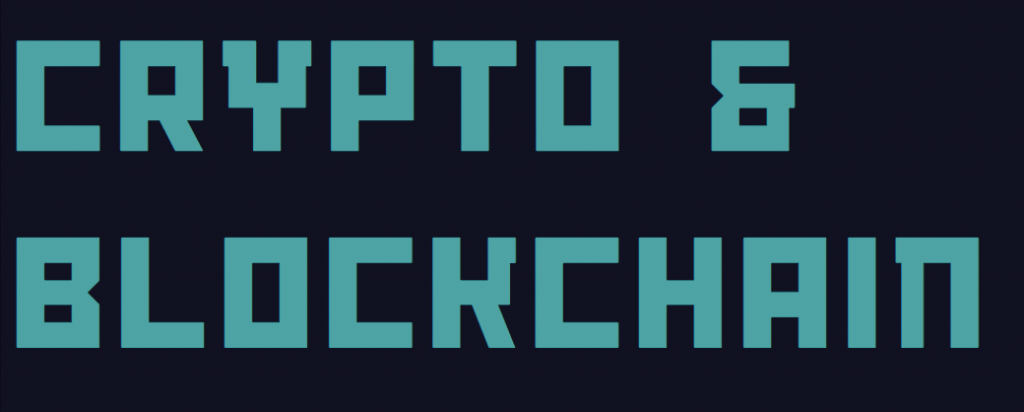
The content on this website, including articles, blogs, reviews, and any other information provided, is for informational purposes only. It represents our personal opinions and should not be considered as financial, investment, or legal advice. Cryptocurrency and blockchain investments are inherently risky, and their value can be volatile. The information provided on this website is based on our own research, analysis, and experiences in the crypto space. We strongly encourage all visitors to conduct their own research and consult with financial and legal professionals before making any investment decisions. We do our best to ensure the accuracy and reliability of the information presented on this site. However, cryptocurrency markets are constantly evolving, and information may become outdated or inaccurate over time. Therefore, we cannot guarantee the timeliness, accuracy, or completeness of the content provided. Please be aware that our opinions and findings are subject to change as new information becomes available or as market conditions shift. We do not endorse or promote any specific cryptocurrency, project, or investment opportunity unless explicitly stated. By using this website, you agree to do so at your own risk and acknowledge that any investment decisions you make are solely your responsibility. We are not liable for any financial losses, legal issues, or other consequences that may result from your use of the information provided on this site. Remember that the cryptocurrency market is highly speculative, and past performance is not indicative of future results. Always exercise caution and diligence when considering cryptocurrency investments